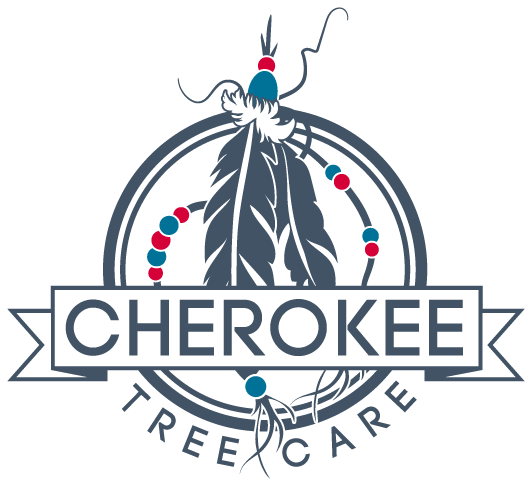In this spring’s newsletter, we discuss a popular tree beloved by many homeowners, the Red Maple. While these trees are abundant in our urban landscapes, they face a few problems. From structural issues to pest susceptibility, Red Maples require some maintenance from their owners.
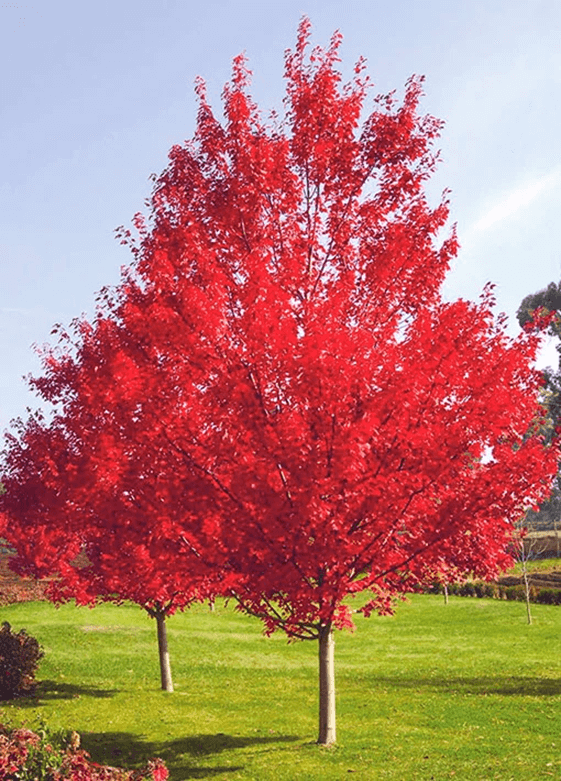
Structural Problems with Red Maples
You can hardly drive in a newly constructed neighborhood without seeing a Red Maple in every front yard. Red Maples are loved by many for their beautiful fall color and fast growth rate. However, the structure of the Red Maple has much to be desired.
Red Maples are prone to codominant stems. Where there are codominant stems, we sometimes find included bark. I know these words are not in most typical vocabularies, but the ability to identify them in your trees can help mitigate future problems.
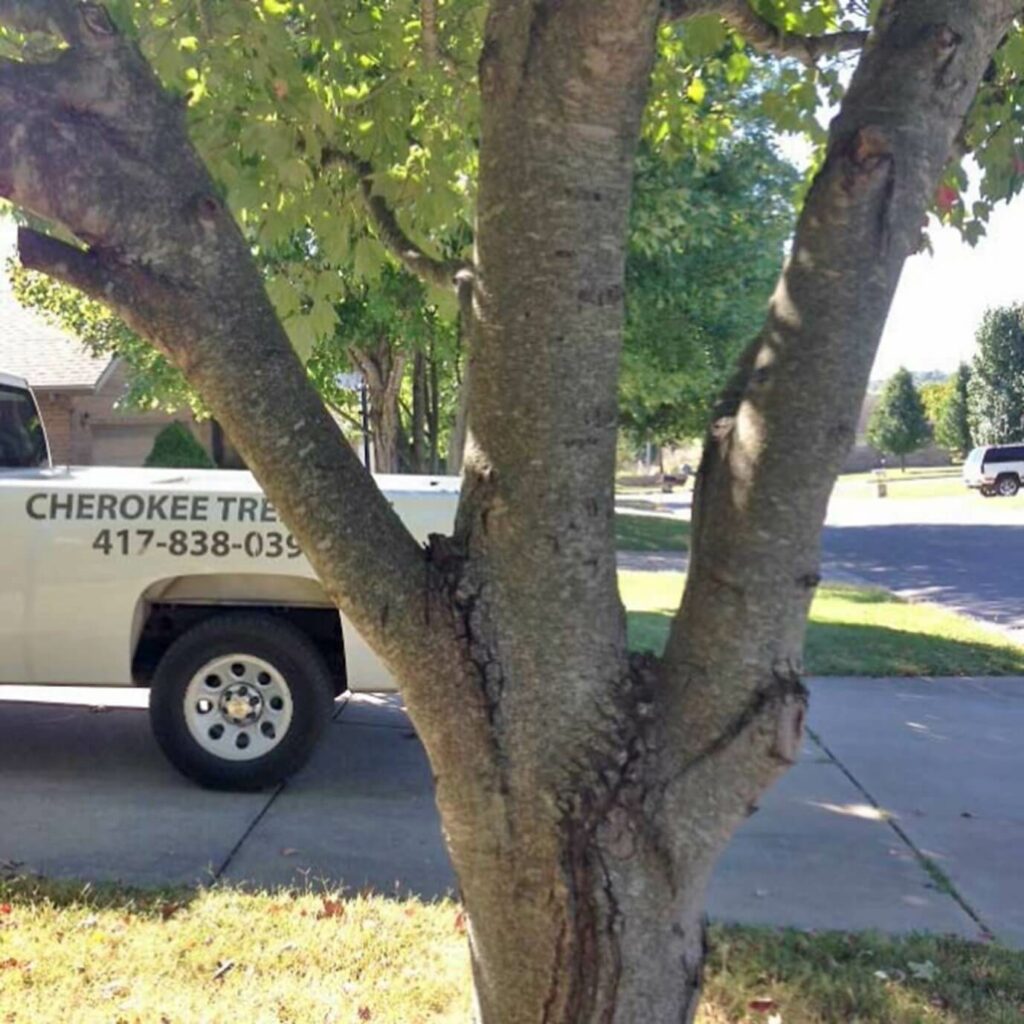
Codominant stems are when a tree has more than one main stem similar in diameter emerging from the same location on the trunk. A tree with one central leader or trunk and smaller branches stemming from it is a preferred and generally stronger structure.
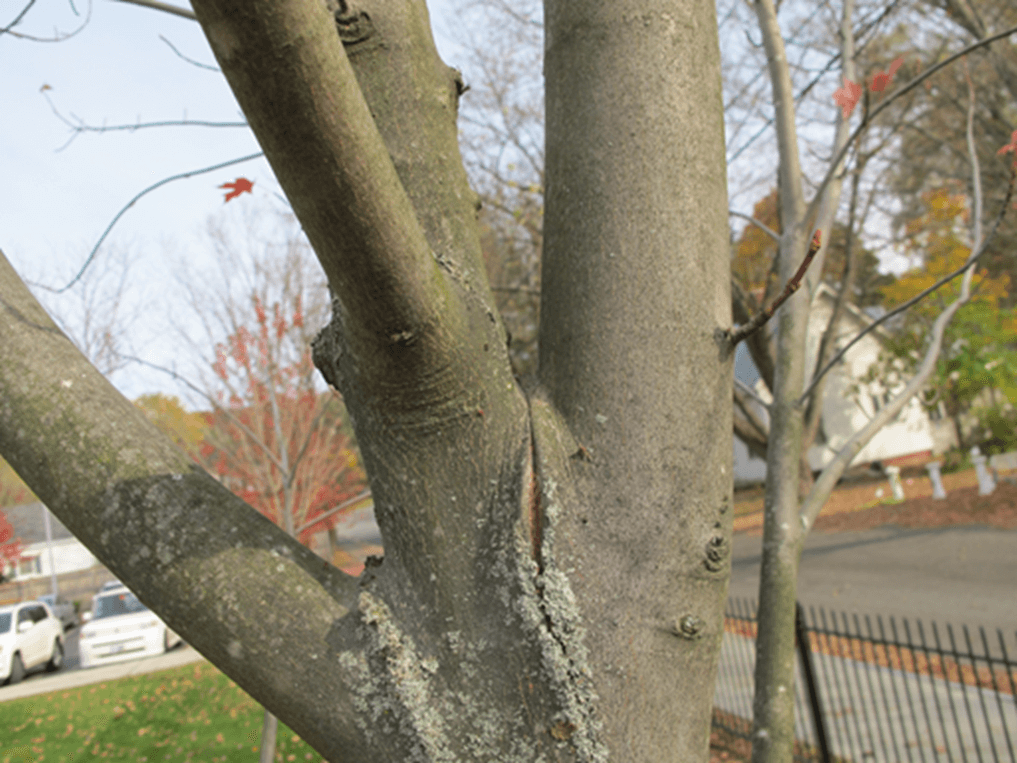
Included bark can appear as a crack or ridged area where the codominant stems meet. Included bark occurs when two stems or branches grow too close to each other. This causes the bark at the junction to fold in, rot or crack.
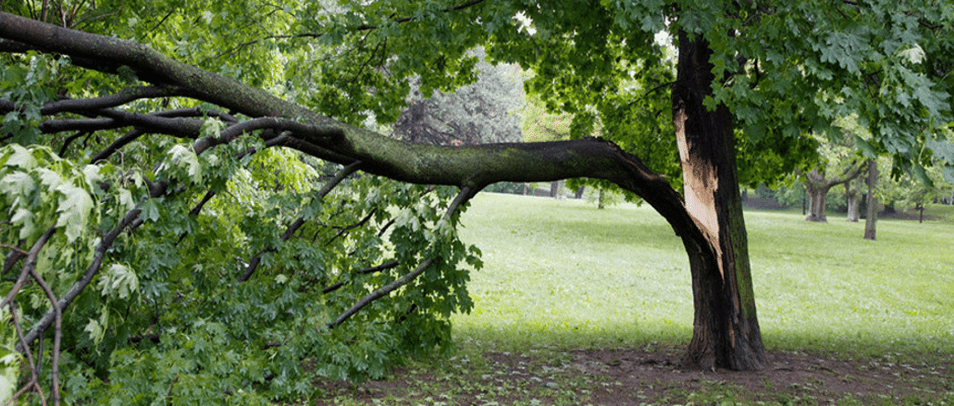
Due to these structural defects, Red Maples are prone to damage when we get spring storms. There are a few ways we can help mitigate damage, such as structural pruning and cabling.
If you would like a certified arborist to look at your Red Maple or other trees, give us a call today. We would be happy to give you a free estimate for any work needed on your trees and shrubs.
Subordinate Pruning
In this video, Cherokee Tree Care owner, Tim Crews, discusses the process of a type of structural pruning we often do for Red Maples. Subordinate pruning is a way to help encourage a better structure and mitigate breakage due to weak unions.
Have more questions? Contact us if you would like to discuss how tree pruning could benefit your trees.
Pest Problems with Red Maples
Another problem we often see with Red Maples are scale insects. These insects are inconspicuous as if they were just part of the tree. They attach themselves to the limbs or trunk of the tree and feed on the sap, weakening and stressing it’s host.
We mostly see two types of scale on Red Maples. One is Gloomy Scale, and the name is very accurate. This type of scale is difficult to manage and can populate to a point of stress and dieback for trees if intervention doesn’t happen.
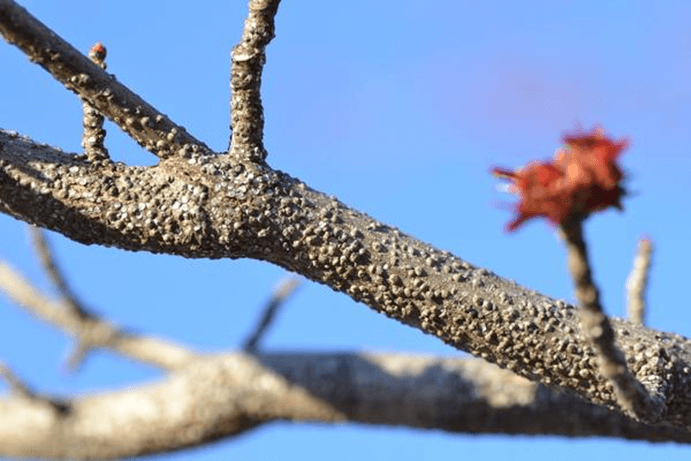
Japanese Maple scale is another that we have seen quite a bit of in the past couple of years. Don’t let the name fool you, Japanese Maple scale affects more than just Japanese Maples. They like Red Maples, Crabapples, Dogwoods, and others.
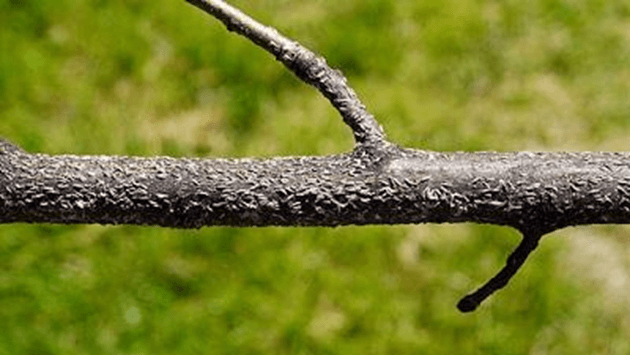
Because these insects have a shelled coating that helps protect them, they cannot be sprayed with a contact insecticide spray. An effective method to combat these pests is using a systemic insecticide that goes within the tree. If infestations are substantial enough, clearing them up may take a few seasons.
Cherokee Tree Care has a plant health care department dedicated to identifying pests and diseases on your trees and shrubs and treating them.
In conclusion, with some planned maintenance and inspections from a trained arborist, Red Maples can be a suitable addition to your landscape. Please call our local arborist for how to best care for the trees and shrubs on your property.
